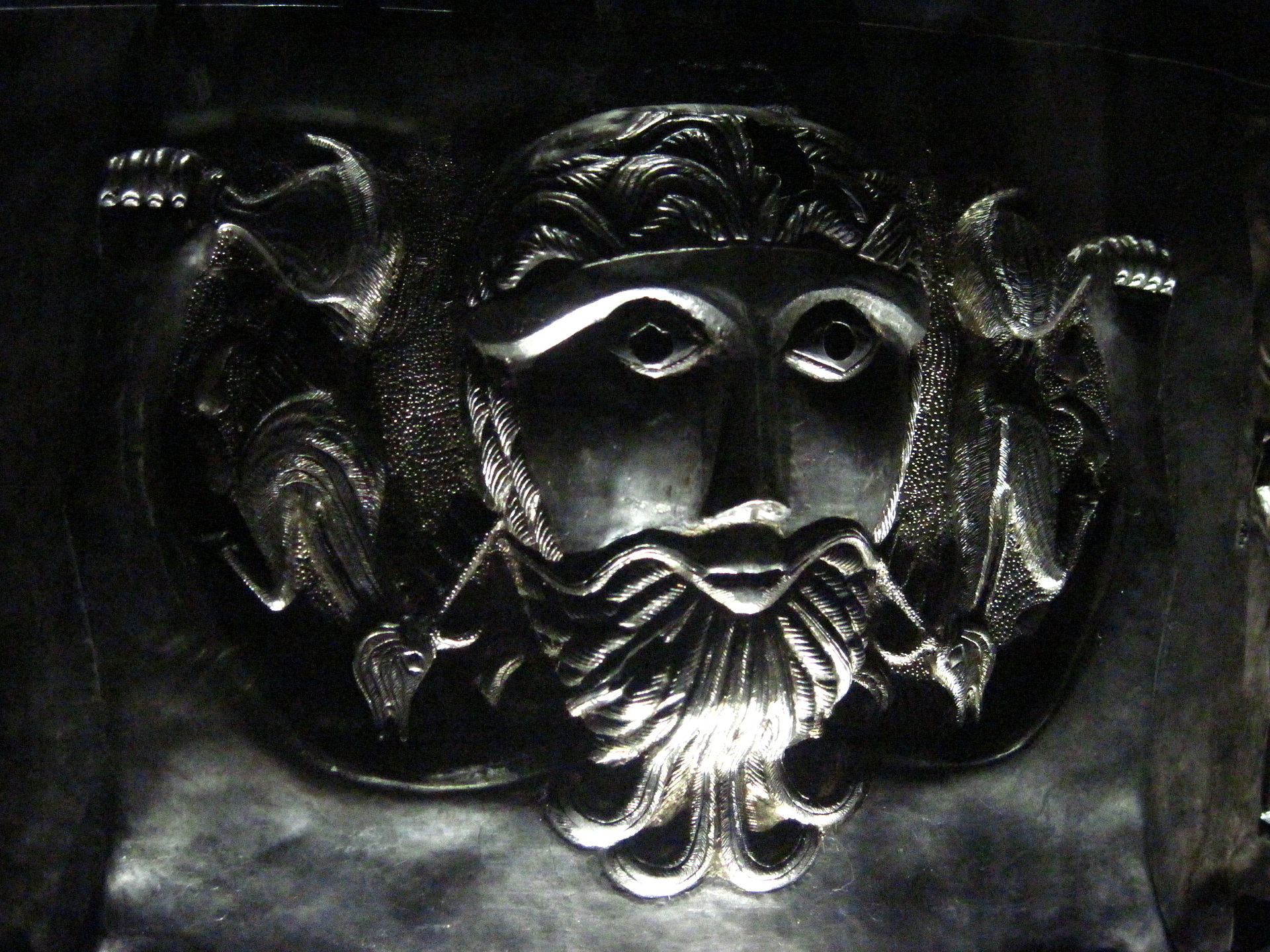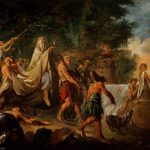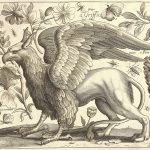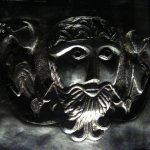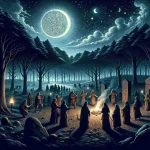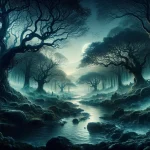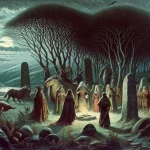Celtic religious practice and belief was oral in nature and not recorded in written form by the Celts themselves. As a result, the available sources are often indirect, created by outsiders, or come from a later period after the Christianization of Celtic lands.
Ancient Celtic Religion & Beliefs
Ancient Greek and Roman writers, such as Julius Caesar, Strabo, and Tacitus, provided descriptions of the Celts and their practices. While invaluable, these accounts are often limited in scope and may be biased, as they were written from the perspective of outsiders, sometimes even enemies.
Welsh Mythology & the Mabinogi
Welsh mythology, a rich tapestry of tales and legends, is primarily chronicled in medieval manuscripts that are treasures of Celtic lore. Among the most renowned of these are the “Mabinogion,” a collection of stories compiled from earlier oral traditions, and the manuscripts of the “Black Book of Carmarthen” and the “Red Book of Hergest.” These texts, written predominantly in the Welsh language, date back to the 12th and 14th centuries and offer a unique window into the ancient beliefs, societal norms, and the imaginative world of the Welsh people. They contain a myriad of tales, from the exploits of heroes like Pwyll and Cú Chulainn to the enchanting narratives of magical creatures and the Otherworld. The stories within these manuscripts are not just mere folklore; they are emblematic of the rich cultural and literary heritage of Wales, reflecting the values, struggles, and the very essence of the Celtic spirit.
Celtic Otherworld
In Celtic mythology, the Otherworld is the realm of the deities and possibly also the dead. A common factor in later mythologies from Christianized Celtic nations was the otherworld. This was the realm of the fairy folk and other supernatural beings, who would entice humans into their realm. Sometimes this otherworld was claimed to exist underground, while at other times it was said to lie far to the west. Several scholars have suggested that the otherworld was the Celtic afterlife.
Druids, Bards and Seers
Ancient Druids and Druidism represent a fascinating and enigmatic aspect of Celtic culture, deeply entwined with the spiritual and natural world. Druids, revered as priests, philosophers, and keepers of wisdom in Celtic societies, were integral to the religious and cultural life in ancient Britain, Ireland, and other parts of Europe before and during the Roman era. Druidism, their spiritual practice, was deeply connected to the natural world, emphasizing the sacredness of nature and the belief in a pantheon of deities. The Druids were known for their profound knowledge of nature and the cosmos, which they used in various rituals, including seasonal festivals like Samhain and Beltane that celebrated the cycles of nature. They were also the custodians of the oral tradition, preserving the myths, legends, and laws of their people. Despite the scarcity of written records, due to their tradition being primarily oral, the legacy of the Druids continues to fascinate, symbolizing a world where the spiritual realm and the natural world were intimately intertwined.
Celtic Religion placed great importance on animals
Besides gods, animals were also important to the Celts and were perhaps themselves regarded as sacred, especially the bull, boar, stag, and horse.
Many of these animals were regarded as totems with protective qualities and so they appear frequently in designs on weapons and armour.
Celtic Gods in Animal forms
Celtic gods appeared in many animal forms. Because of this, Celts were often cautious and respectful towards animals. Epona is related to horses, Cernunnos is linked to stags (despite both snakes and birds also been depicted). A renowned Celtic battle goddess, the Morrigan, could transform herself into a raven and was believed to inspire warriors to call upon their inner strength to achieve greatness.
Celts also believed that animals like cattle, horses, pigs, dogs, deer, bears, snakes and birds were protected by gods, or more commonly, goddesses.
People Changing into Animals in Celtic Mythology
In the Mabinogion, Math turns his wayward nephews into deer, boar and wolves, each pair producing offspring. Math then transforms the fawn, piglet and cub into human form.
Donn mac Midhir lures Finn to the Otherworld in the shape of a fawn.
Birds in Celtic Mythology
Animals such as birds were particularly important, had supernatural powers and their singing was considered to have healing magic.
The Birds of Rhiannon are probably the most well known of the otherworld birds that feature in Celtic myth. Rhiannon is often linked to the Gaulish Epona, and it is interesting to note that iconic representations of the Goddess Epona are accompanied by both horses and birds.
Swans also feature in many stories and artworks, notably the well known Irish legend of “The Children of Lir”. This famous story tells of four royal children who were transformed into swans by their jealous stepmother, Aoifa. Tales of swans always portray them as people under enchantments, whether the Children of Lir, Aengus and Caer, Midhir and Etain, Derbforgaill and her servant.
A swan-maiden was the mother of Cuchulain, hero of Ireland’s Ulster cycle, and thus the warrior had a geas (taboo) against killing these sacred birds.
The main motif regarding swans seems to be one of love. Aengus mac in Oc fell in love with Caer, who was under a magical enchantment by her father so that she was in the form of a swan for a year, followed the next year by being in the form of a human. Aengus transforms himself into a swan to unite with Caer, whilst she is still in swan-form, and the two of them return to his palace at Brugh na Boinne
The gods of Celtic Religions
Deities found in many regions include Lugus, the tribal god Toutatis, the thunder god Taranis, the horned god Cernunnos, the horse and fertility goddess Epona, the divine son Maponos, as well as Belenos, Ogmios, and Sucellos. Celtic healing deities were often associated with sacred springs. Caesar says the Gauls believed they all descended from a god of the dead and underworld.
Triplicity is a common theme, with a number of deities seen as threefold, for example the Three Mothers. Some figures from medieval Irish mythology have been interpreted as iterations of earlier deities. According to Miranda Aldhouse-Green, the Celts were also animists, believing that every part of the natural world had a spirit.[4]
Key gods were given all-embracing powers or characteristics, and these include Cernunnos, ‘the horned god’ who likely represented nature and fertility. Another major figure is Lugus (known as Lugh in later periods), perhaps the only universally worshipped god in the Celtic world, who represented the sun and who was regarded as all-wise and all-seeing. There were many female goddesses associated with healing springs and rivers such as Sequana, a personification of the River Seine, and Epona, who was linked with horses.
An unusual feature of Celtic gods was that some were viewed as a trio, perhaps representing three different aspects of the same divinity. One trinity example is the three mother goddesses, the Matronae who represent individually the similar concepts of strength, power, and fertility. Of the numerous local and regional gods, many were associated with those things of primary concern to everyday life such as warfare, sovereignty, tribal identity, healing, hunting, and the protection of specific groups like mothers and children. There was a Greek and Roman influence on the Celtic religion from the 2nd century BCE when Celtic sacred sites, which had previously been mere clearings surrounded by earthworks, began to use larger stone temples. So, too, some Greco-Roman gods were incorporated into the Celtic pantheon.
